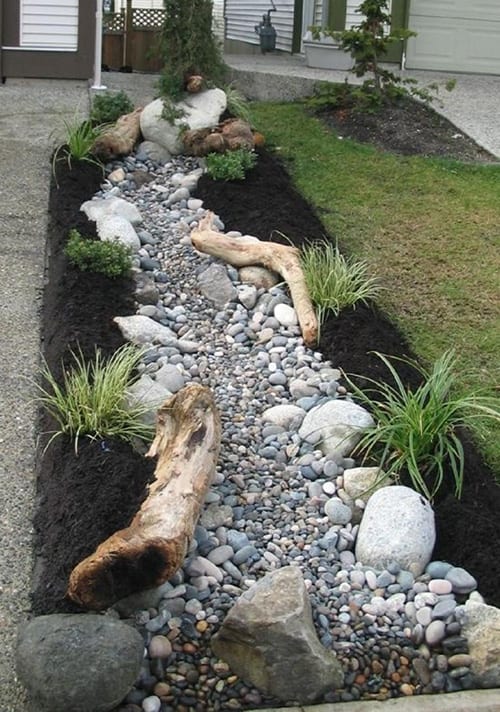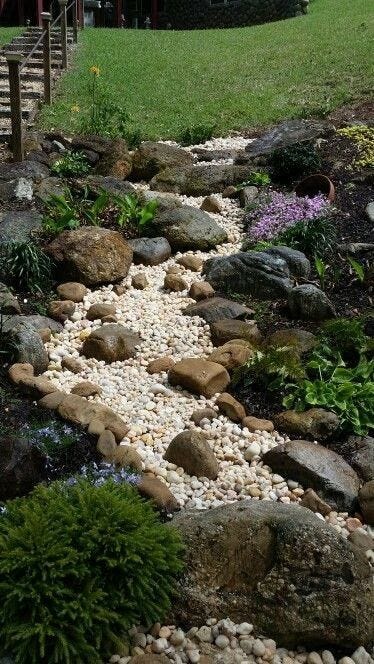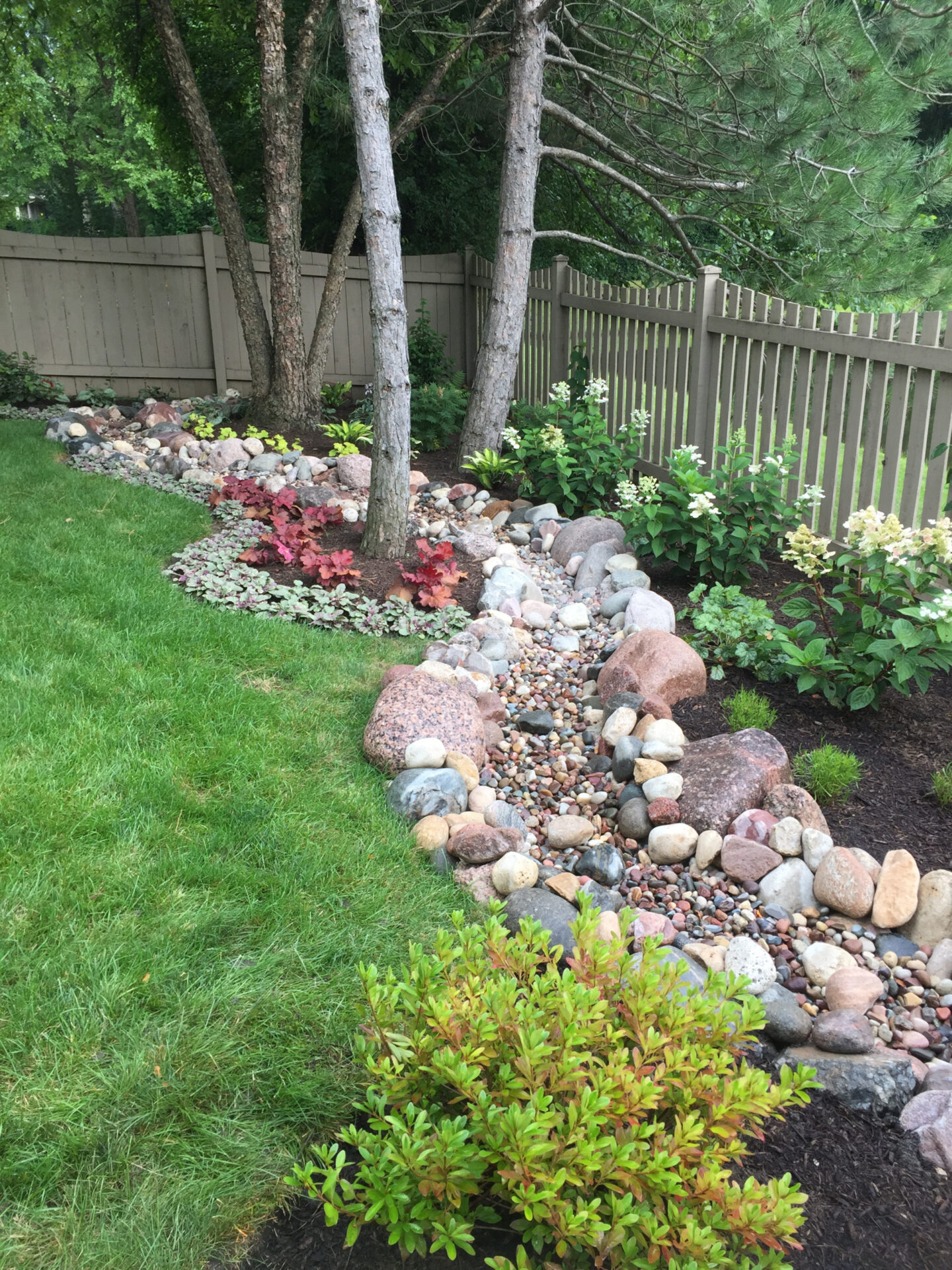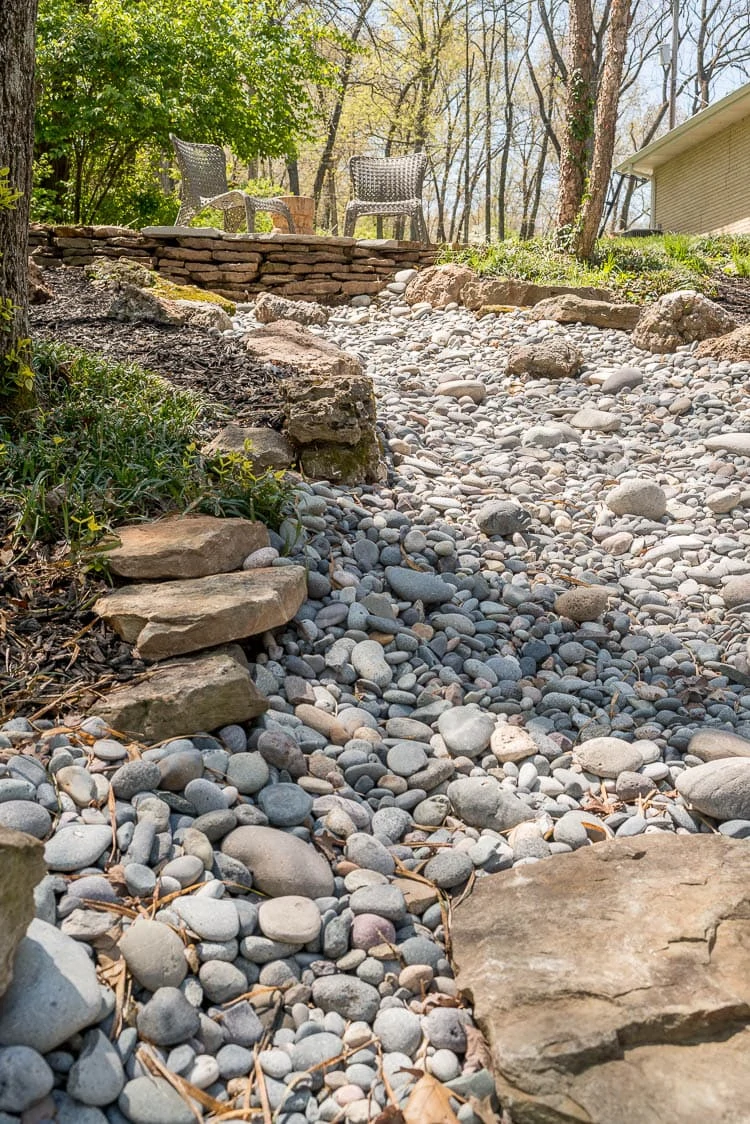Adding a Dry River Bed for Beauty and Drainage Control
By Innovation Grounds
Dry river beds are one of the most creative and functional landscaping solutions available for homeowners looking to improve both the aesthetic appeal and drainage control of their outdoor space. Combining visual charm with practical purpose, a dry river bed mimics the look of a flowing stream—without the water—while redirecting runoff and preventing soil erosion.
In this blog post, we’ll explore how to add a dry river bed to your yard, the benefits it provides, and how to maintain it over time.
What is a Dry River Bed?
A dry river bed, also known as a dry creek bed, is a shallow trench lined with stones and filled with pebbles or river rocks. It is designed to redirect excess rainwater and surface runoff while serving as a natural-looking landscape feature.
These artificial streambeds are especially useful in areas with poor drainage, heavy rainfall, or sloped yards. However, their design flexibility makes them a beautiful addition to any garden—even in dry climates.

Why Add a Dry River Bed?
1. Improves Yard Drainage
One of the primary reasons to install a dry river bed is to control drainage problems. If your yard pools water after rain or your foundation is at risk, a dry creek bed can help channel water away from the home and into a designated area such as a rain garden or swale.
2. Prevents Soil Erosion
If you have a sloped yard, runoff can wash away topsoil, damaging plants and landscaping. A dry river bed slows down the flow of water, allowing it to soak into the ground more gradually, which reduces erosion.
3. Adds Visual Appeal
A dry river bed adds a natural, organic element to your landscape. You can customize it with decorative rocks, boulders, driftwood, or even drought-tolerant plants to create a focal point that draws the eye.
4. Low-Maintenance Landscaping
Once installed, dry river beds require minimal maintenance. Unlike grass or flower beds, they don’t need watering, fertilizing, or regular pruning.

How to Build a Dry River Bed: Step-by-Step
Step 1: Plan Your Design
Start by mapping out the natural flow of water in your yard. Use spray paint or a garden hose to trace the shape of your desired dry river bed. Aim for a gentle curve that mimics a real stream.
Step 2: Excavate the Trench
Dig a trench that is about 6–12 inches deep and 1–2 feet wide, depending on how much water it needs to handle. Slope the trench slightly downward to help water flow.
Step 3: Add a Weed Barrier
Lay down a permeable landscape fabric to suppress weeds while allowing water to pass through.
Step 4: Place Larger Rocks First
Position larger stones or boulders along the edges and inside the trench. These will help direct the water and create a natural, rugged appearance.
Step 5: Fill with River Rocks and Gravel
Fill in the trench with smaller river rocks, gravel, or crushed stone. You can mix sizes and colors for a more authentic look.
Step 6: Add Finishing Touches
Consider incorporating drought-tolerant plants, such as ornamental grasses, sedges, or succulents, along the edges. You can also add decorative touches like driftwood or stepping stones.

Landscaping Ideas to Complement a Dry River Bed
To enhance your landscape even further, try these ideas:
Rain Gardens: Create a rain garden at the end of the dry river bed to catch and absorb runoff.
Bridges or Stepping Stones: Add a small wooden bridge or stepping stones to increase visual interest.
Night Lighting: Use solar-powered landscape lights to illuminate the dry river bed at night, creating a magical glow.

Maintenance Tips for Long-Term Success
While dry river beds are low maintenance, occasional upkeep will keep them looking their best:
Clear Debris: After storms, remove any leaves, sticks, or dirt buildup.
Weed Control: Pull weeds or reapply landscape fabric if needed.
Reposition Stones: Over time, rocks may shift—rearrange them to maintain the design and flow path.
Refresh Gravel: Every few years, you might need to top off the gravel or replace worn-out stones.

Final Thoughts
A dry river bed is more than just a pretty feature in your yard—it’s a functional drainage solution that prevents erosion, manages rainwater runoff, and adds timeless beauty to your outdoor space. Whether you’re a DIY enthusiast or planning to hire a landscape contractor, incorporating a dry creek bed can transform your yard into a more eco-friendly, visually appealing environment.
Are you ready to add one to your landscape? With a little planning and creativity, your dry river bed could become the highlight of your garden.


